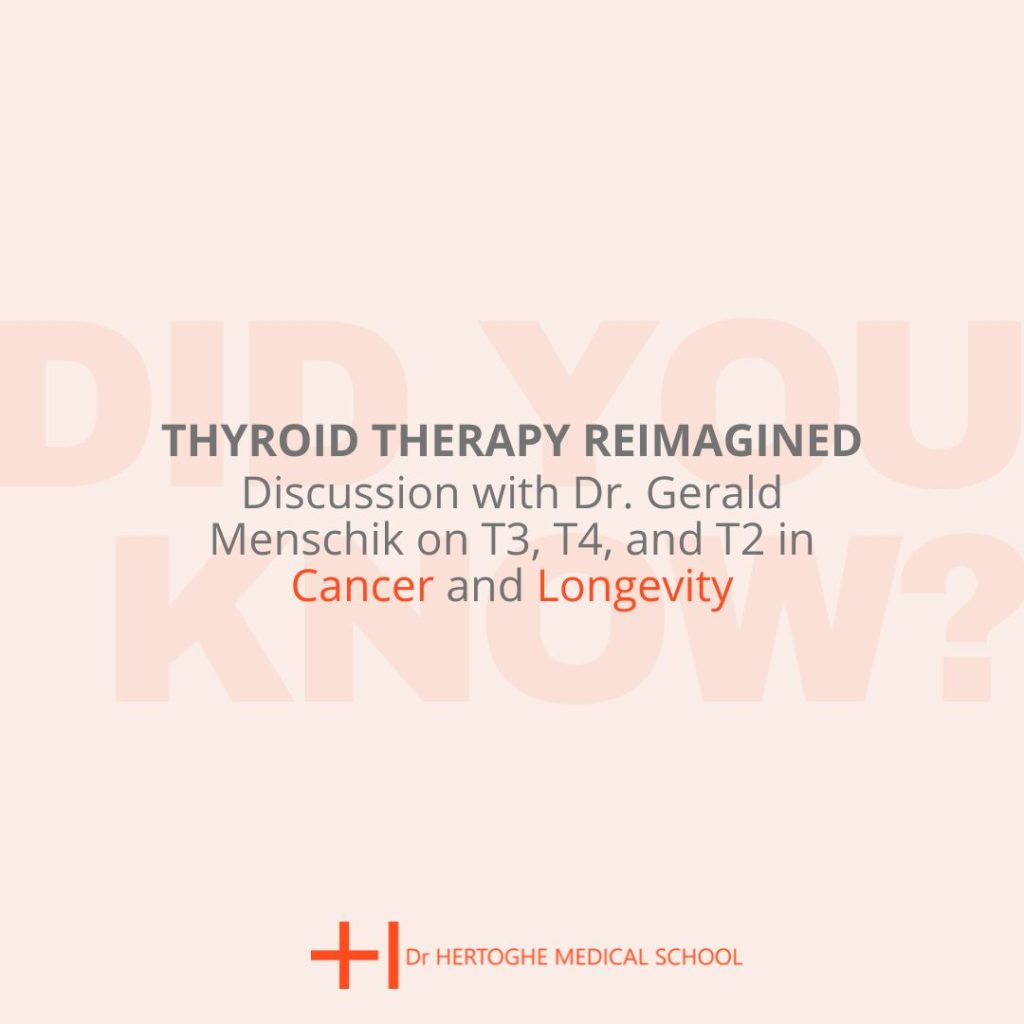Thyroid Therapy Reimagined: Discussion with Dr. Gerald Menschik on T3, T4, and T2 in Cancer and Aging

I recently had the pleasure of speaking with Dr. Gerald Menschik, a forward-thinking physician based in Vienna, whose work in thyroid therapy brings fresh perspectives to how we manage cancer and aging. During our exchange, Dr. Menschik shared fascinating insights on the distinct actions and therapeutic potential of thyroid hormones—especially T3 and T2—in contrast to the often-prescribed T4.
Understanding the Roles of T3 and T4
Traditionally, T4 (thyroxine) has been widely prescribed in thyroid hormone replacement therapy. However, Dr. Menschik pointed out that T4, although essential for growth and development—especially in children and during pregnancy—can potentially stimulate unwanted cell proliferation in older adults due to its interaction with integrin receptors located on the cell membrane. These receptors promote growth and angiogenesis, processes that are beneficial in youth but may become problematic later in life by possibly enhancing tumor growth.
T3 (triiodothyronine), on the other hand, acts primarily at the nuclear receptor level and appears to be more metabolically focused without promoting cellular proliferation to the same extent. For this reason, T3 may be more appropriate for aging patients or individuals with cancer, where limiting uncontrolled cell growth is a concern.
The Emerging Role of T2 in Clinical Practice
Perhaps the most intriguing part of our conversation centered around T2, a lesser-known thyroid hormone containing two iodine atoms. Dr. Menschik described T2 as a “silent helper” that exerts its influence at the mitochondrial level, promoting fat burning, increasing metabolism, and—interestingly—reducing appetite, unlike T3 which may increase it.
In clinical practice, Dr. Menschik has seen success using a combination of T2 and T3 in patients with fatigue, hypothyroidism, and even in cases of thyroidectomy where desiccated thyroid extract may not be tolerated. T2’s milder yet effective action makes it particularly valuable in patients who are sensitive to T3.
Tailoring Treatment by Age and Condition
One of the key messages Dr. Menschik conveyed was the importance of individualized thyroid therapy. He and his team in Vienna customize combinations of T2, T3, and T4 based on each patient’s age and clinical condition. For example:
- Children and pregnant women typically require higher levels of T4 to support growth and fetal development.
- Older adults or those with malignant diseases may benefit more from T3 and T2, with reduced or even no T4 to avoid stimulating tumor growth.
This age- and condition-specific approach represents a nuanced way of optimizing thyroid therapy and reducing potential risks.
Practical Considerations: Dosing and Delivery
Dr. Menschik’s patients receive compounded, slow-release forms of T3, making it possible to dose just twice a day rather than the conventional six times a day for T3. T2 when used in dosages around 100–200 micrograms, generally does not suppress TSH at these levels, which helps maintain balance and avoid overtreatment. In higher doses (above 300 micrograms), however, T2 may begin to influence TSH levels.
Importantly, both T2 and T3, when properly dosed, appear to be well-tolerated and safe—even for the cardiovascular system.
A New Frontier in Thyroid and Cancer Care
Dr. Menschik’s innovative work suggests that with age, our thyroid therapy needs to evolve—just as our bodies do. By moving beyond a one-size-fits-all approach and embracing the full spectrum of thyroid hormones, clinicians may unlock new therapeutic possibilities for patients facing fatigue, thyroid dysfunction, or even cancer.
This conversation has opened up valuable pathways for deeper research and clinical reflection. I am grateful for Dr. Menschik’s generous insights, and I look forward to seeing how this line of thinking continues to reshape our understanding of endocrine and integrative oncology.

